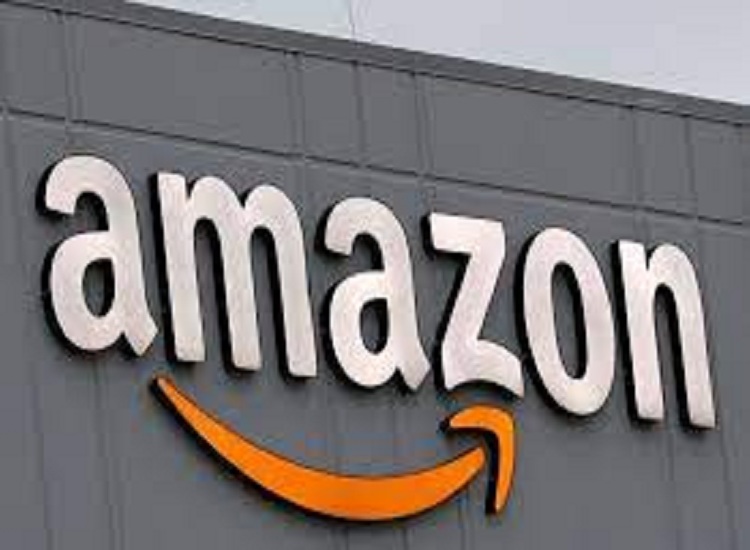Telecom
63% of Marketers leveraging AI use generative while 54% use predictive AI is marketers’ top priority – and biggest headache

Marketers are prioritising AI implementation over all other initiatives this year, according to new Salesforce research in the ninth State of Marketing report.

With customer standards for personalisation continuing to rise year after year and marketing technologies constantly evolving, marketers need to act fast to keep up. Many see AI as a hack to do just that: a go-to for sharper personalization and efficiency, and now, creativity at scale with generative AI. Yet data challenges — from unification, integration, and security — are slowing marketing teams down.
With insights from over 4,800 marketers across 29 countries, the State of Marketing report highlights how top-performing marketers are outdoing their competition by embracing AI and other new opportunities while mitigating these data, trust, and security challenges.
Marketers pursue more tailored engagement amid rising customer expectations
Increasingly, marketers aim for more customised experiences based on detailed data like individual behaviours, preferences, interactions, or other specific indicators. And they are looking to AI to deliver more insights, predictions, automated workflows, and content. As a result, marketers consider having a data and AI strategy of utmost importance. On average, today’s marketers are able to fully personalise across five channels, with high-performers tailoring six channels and underperformers managing to fully personalise across only three.
Channels where content is easy to test and iterate on the fly, like mobile messaging, email marketing, and social media, see the most advanced personalization efforts. On the other hand, channels demanding more production time and planning like audio, organic search, and TV/OTT have the most work to do with 43%, 42%, and 41% seeing full personalization, respectively.
Marketers rev up AI adoption, but underperformers stall out in the evaluation stage
Marketers are pulled in many directions, and are focused on improving AI adoption. However, they’re struggling to actually implement AI and create cohesive journeys, among other difficulties.
Ironically, AI could be one tool to help teams overcome such challenges. Salesforce Chief Marketing Officer Ariel Kelman highlights how companies are entering “a new era of AI, catalysed by the generative gold rush,” and that the technology is being embraced by marketing organisations. As he sees it, “marketers are leading the charge by embracing rapid advancements in the technology to better connect with customers and prospects.”
Marketers are eager to implement AI into their own work streams: 75% are either experimenting with or have fully implemented AI in their operations. A closer look reveals that the embrace of the technology varies by performance level.
The majority of high- and moderate-performing teams are already rigorously testing, tweaking, and incorporating AI into their operations. Still, more than one-third of underperformers have yet to graduate from the consideration phase. In fact, high-performing marketing teams are 2.5x more likely than underperformers to have fully integrated AI into their operations. Until underperformers pivot from passive planning to hands-on action, AI’s advantages will continue to elude them.
Marketers embrace AI to predict, create, and integrate at scale
Sixty-three percent of marketers leveraging AI say they use generative while just over half (54%) are using predictive. And despite its relative novelty, generative AI use cases already rank among marketers’ favourites alongside predictive applications. As a result, teams are harnessing both types of AI for critical use cases like automating customer interactions and generating content — activities that will augment creativity and accelerate productivity.
Despite AI enthusiasm, concerns about trusted data remain
Compared to their peers in other departments, marketers are especially concerned about falling behind on generative AI adoption. Eighty-eight percent of marketers worry about missing out on generative AI’s benefits, compared to 78% of sales and 73% of service colleagues.
Even so, senior marketers remain cautious, citing concerns such as data and job security. Compared to their peers further up the corporate ladder, on-the-ground team leads are particularly wary about job stability. One in four team leads are worried AI will replace their job, compared to one in five executives. For their part, CMOs are most concerned with data leaks, with 41% citing data exposure as their top concern compared to 29% of VPs and 32% of team leads.
While data leaks are marketers’ number one generative AI concern, not having enough of the right data falls at number two. To capture enough valuable information, marketers are primarily leveraging customer service data and transaction data, showing an effort to partner with colleagues across sales and commerce departments to accomplish this. However, unification of that and other data — such as unstructured data from emails, NFTs, and more — remains a challenge.
In fact, only 31% of marketers are fully satisfied with their ability to unify customer data sources. What’s more, only approximately half of marketers say their systems automatically and regularly update with data from other departments.
Without fully integrated data, marketers’ ability to derive sharp insights is blunted, leaving core activities like analysing performance, suppressing audiences, and building campaigns powered by out-of-date or incomplete information. It even jeopardises marketers’ top priority: effectively leveraging AI.
A closer look at the survey results shows that fully integrated data is more common among high-performing marketing teams, suggesting that investing in unification can give marketers an edge. As Kelman explains, “a strong data foundation will be critical to AI success for marketers as they work to bring together and unify customer data for real-time activation.”
Telecom
NCC Ranked Among Top 3 MDAs for Best Website Performance in 2025

Bureau of Public Service Reforms (BPSR) has named the Nigerian Communications Commission (NCC) among the top three Ministries, Departments and Agencies (MDAs) of the Federal Government with the Best Ranking in Website Performance for 2025.

L-R: Head Special Projects, Nigerian Export Promotion Council (NEPC), Salamatu Andu; Executive Commissioner, Technical Services, Nigerian Communication Commission (NCC), Engr. Abaraham Oshadame; Director General Bureau of Public Service Reforms (BPSR), Head Customer Support Service, Galaxy Backbone, Rosemary Ehize; Secretary to the ES. Nigerian Content Development and Monitoring Board, Tahir Aminu at the BPSR award ceremony for top four MDAs in BPSR Website Performance and Ranking 2025 at the BPSR office on Tuesday, 23rd December, 2025.
This is coming barely three weeks after the telecom regulator was recognized as one of the top five best-performing Federal Government agencies for 2025 by the Presidential Enabling Business Environment Council (PEBEC) – a testament to the Commission’s consistency in investment in technology for ensuring efficient service delivery.
In the BPSR 2024/2025 scorecard ranking of agencies’ websites, the NCC came second in the ranking, trailing behind Galaxy Backbone Limited, which came first while the Nigeria Export Promotion Council (NEPC) clinched the third position, from a pool of 235 MDAs, whose website were evaluated.
BPSR deployed 14 evaluation criteria in include MDA’s website compliance with .gov.ng domain name, appearance and aesthetics (look and feel) of the website, content, relevance to MDAs mandate/government policy and the website’ structure.
Others include website’s responsiveness (device compatibility), security, load time, usability/ease of navigation, availability/uptime, functionality, interactivity, accessibility and capacity building.
The recognition was announced at the official release of Federal Government 2024/2025 Scorecard Ranking for MDAs’ Website held at the Federal Ministry of Finance Auditorium in Abuja on Monday (December 22, 2025) while the award presentation took place at BPSR’s Office on Tuesday (December 23, 2025).
The award, which is an important index metric of the National e-Government Masterplan for determining the Nigeria e-Government Status, was received by the Commission in recognition of its commitment to maintaining a world-class website that enhances service delivery to the citizens.
Receiving the award on behalf of the Executive Vice Chairman of the NCC, Dr. Aminu Maida, the NCC’s Executive Commissioner, Technical Services, Abraham Oshadami, appreciated the BPSR for the recognition, describing the award as “another encouragement for the Commission to be a better public service institution leveraging digital platforms such as our web presence to enhance public service delivery to our various stakeholders, thereby implementing the Federal Government’s Ease of Doing Business policy direction.”
While presenting the award to the NCC, alongside other two agencies, BPSR’s Director-General, Mr. Dasuki Arabi, commended the top three for their proactive decisions in maintaining world-class websites, which are compliant with the Federal Government’s policy direction in effective and efficient service delivery to the citizens.
According to the DG, the 2024/2025 MDA’s websites’ ranking represents a collective effort of federal public institutions in Nigeria to be transparent, accountable and open in governance, as well as a confirmation to align with global best practices in service delivery to the citizens.
Developed about six years ago, Arabi said as a result of the annual ranking, more public institutions have indicated readiness to embrace reforms, and align with the policy direction of the current administration’s Renewed Hope agenda on improve governance for effective service delivery, as introduced by His Excellency President Bola Ahmed Tinubu.
“The ideals of harnessing and deploying technological tools for service delivery has become imperative following the COVID pandemic, and distortions of socio-economic system of nations, culminating in the evolution of competitiveness, cost effectiveness, and agile governance.
“As engine room of governance, it behoves on us in the public service to perform our statutory duties and we must put in place technological innovations and standardized websites to operate services as well as deliver service needs to citizens,” he said.
The Scorecard exercise, he said, is part of the BPSR reform broader function of conducting research on reform implementation efforts and presenting ‘best practice’ models to the entire Public Service, and to among others, improve access to government information, facilitate seamless financial transaction, eliminate corruption and cyber theft, as well as facilitate access to government services.
Speaking on the rigorous nature of the exercise that produced the top three winners, the DG said “in the past few weeks members of the Scorecard Jury drawn from inter-Ministerial Agencies, had worked tirelessly to mill websites of selected MDAs through a rigorous process of enduring criteria for the ranking and the outcome had also passed through a quality assurance mechanism to validate the outcome.”
Telecom
Oyedele Dismisses Claims Bank Accounts Without TIN Will Be Frozen

Taiwo Oyedele, Chairman of the Presidential Committee on Fiscal Policy and Tax Reforms, has dismissed reports that bank accounts not linked to a Tax Identification Number (TIN) will be frozen or automatically debited from January 1, 2026.

Taiwo Oyedele
Oyedele described the claims as false and misleading, warning Nigerians against panic over misinformation surrounding recent tax and financial reforms.
In a post on his X handle Tuesday morning, he wrote: “Don’t let anyone manipulate you. Your bank account is safe. Misinformation makes you panic and fear a reform that is designed to help you.
“When they tell you that your account will be frozen or automatically debited from January 2026, ask them for the evidence in the new law. Be wise.”
He stressed that no provision in the new tax laws authorises the freezing of bank accounts, adding that the rumours are part of widespread misrepresentation of the reforms.
The committee chairman reiterated that the reforms are intended to simplify Nigeria’s tax system and ease the burden on ordinary citizens, not to impose punitive measures on bank customers.
Telecom
Amazon Blocks 1,800 North Koreans From Job Applications

US tech giant, Amazon has disclosed that it blocked more than 1,800 North Koreans from applying for jobs, amid growing concerns that Pyongyang is deploying large numbers of IT workers overseas to earn and launder funds.

Amazon
In a LinkedIn post, Amazon’s Chief Security Officer, Stephen Schmidt, said North Korean nationals have been attempting to secure remote IT roles with companies around the world, particularly in the United States.
He noted that the company recorded nearly a one-third increase in such applications over the past year.
According to Schmidt, many of the applicants operate through so-called “laptop farms” — computers physically located in the US but remotely controlled from abroad.
He warned that the issue is not unique to Amazon and is likely occurring at scale across the tech industry.
He added that common red flags include incorrectly formatted phone numbers and questionable academic credentials.
The issue has previously drawn the attention of US authorities. In July, a woman in Arizona was sentenced to more than eight years in prison for running a laptop farm that helped North Korean IT workers obtain remote jobs at more than 300 US companies.
Officials said the scheme generated over $17 million in revenue for both the woman and North Korea.
Last year, South Korea’s intelligence agency also warned that North Korean operatives were using LinkedIn to pose as recruiters, approaching South Koreans working at defence companies in an attempt to steal sensitive technological information.
“North Korea is actively training cyber personnel and infiltrating key locations worldwide,” Hong Min, an analyst at the Korea Institute for National Unification, told AFP.
He added that, given Amazon’s business model, the motivation behind such operations is largely economic, with a high likelihood of attempts to steal financial assets.
North Korea’s cyber warfare programme dates back to at least the mid-1990s and has since expanded into a cyber unit of about 6,000 personnel known as Bureau 121, according to a 2020 US military report.
In November, Washington announced sanctions against eight individuals accused of being state-sponsored hackers, alleging their illicit activities were carried out to fund North Korea’s nuclear weapons programme.
The US Treasury has also accused North Korea-linked cybercriminals of stealing more than $3 billion over the past three years, primarily through cryptocurrency-related crimes.

 News3 days ago
News3 days agoUS Begins Partial Visa Ban on Nigerians January 1

 E-Financial2 days ago
E-Financial2 days agoFIRS says NIN, CAC Numbers to Serve as Tax IDs from 2026

 News3 days ago
News3 days agoGlo Extends Christmas Greetings, Urges Unity and Care for Others

 News3 days ago
News3 days agoDPLAN Threatens NDPC with Legal Action for Setting aside $32.8m Meta Fine

 Telecom2 days ago
Telecom2 days agoOyedele Dismisses Claims Bank Accounts Without TIN Will Be Frozen

 E-Financial2 days ago
E-Financial2 days agoAfDB Group Mobilises Global Private Capital to Close Africa’s Financing Gap

 E-Financial3 days ago
E-Financial3 days agoNOVA Bank Opens Regional Office in Owerri

 E-Financial2 days ago
E-Financial2 days agoFidelity Bank Bolsters Ikoyi Fire Station with Hoses, Pumps for Safer Communities


























